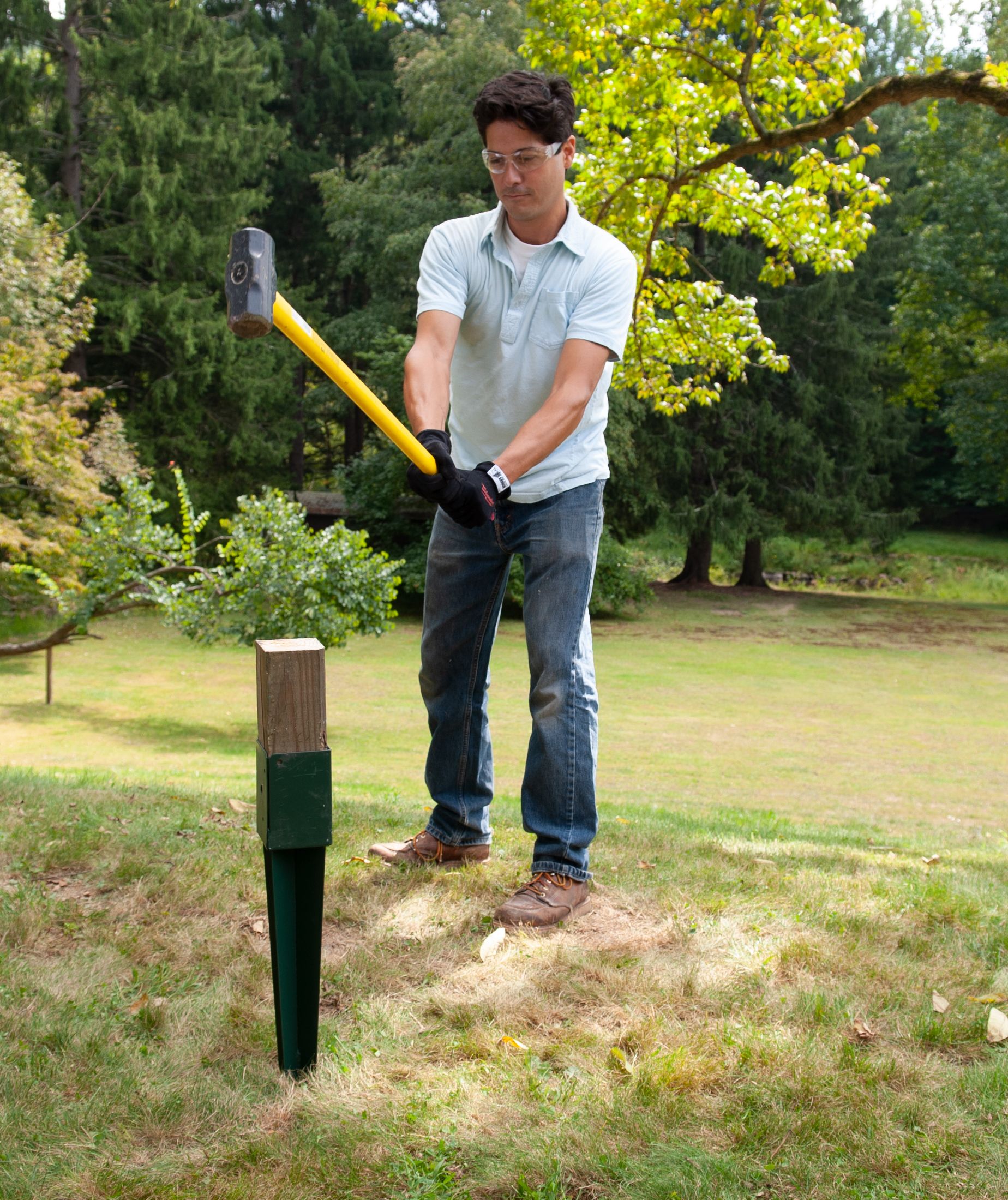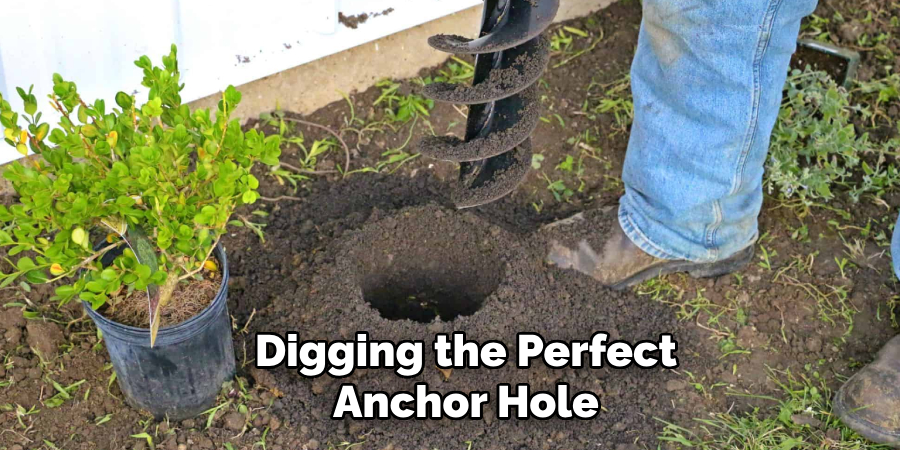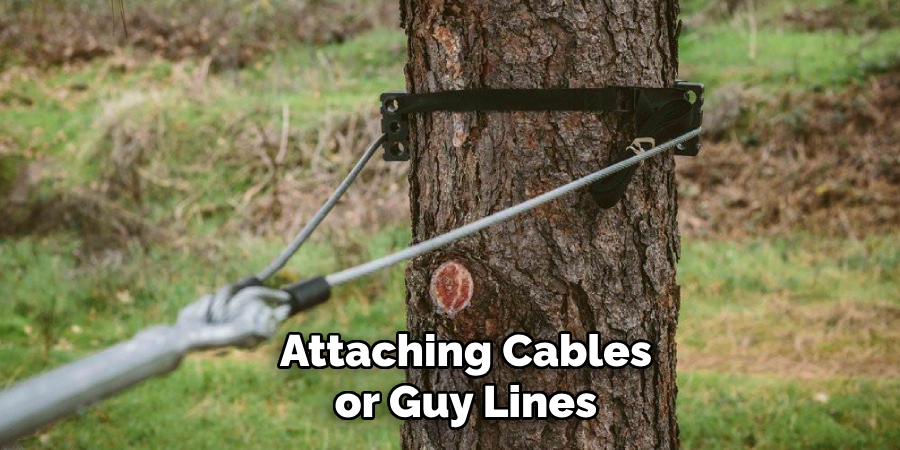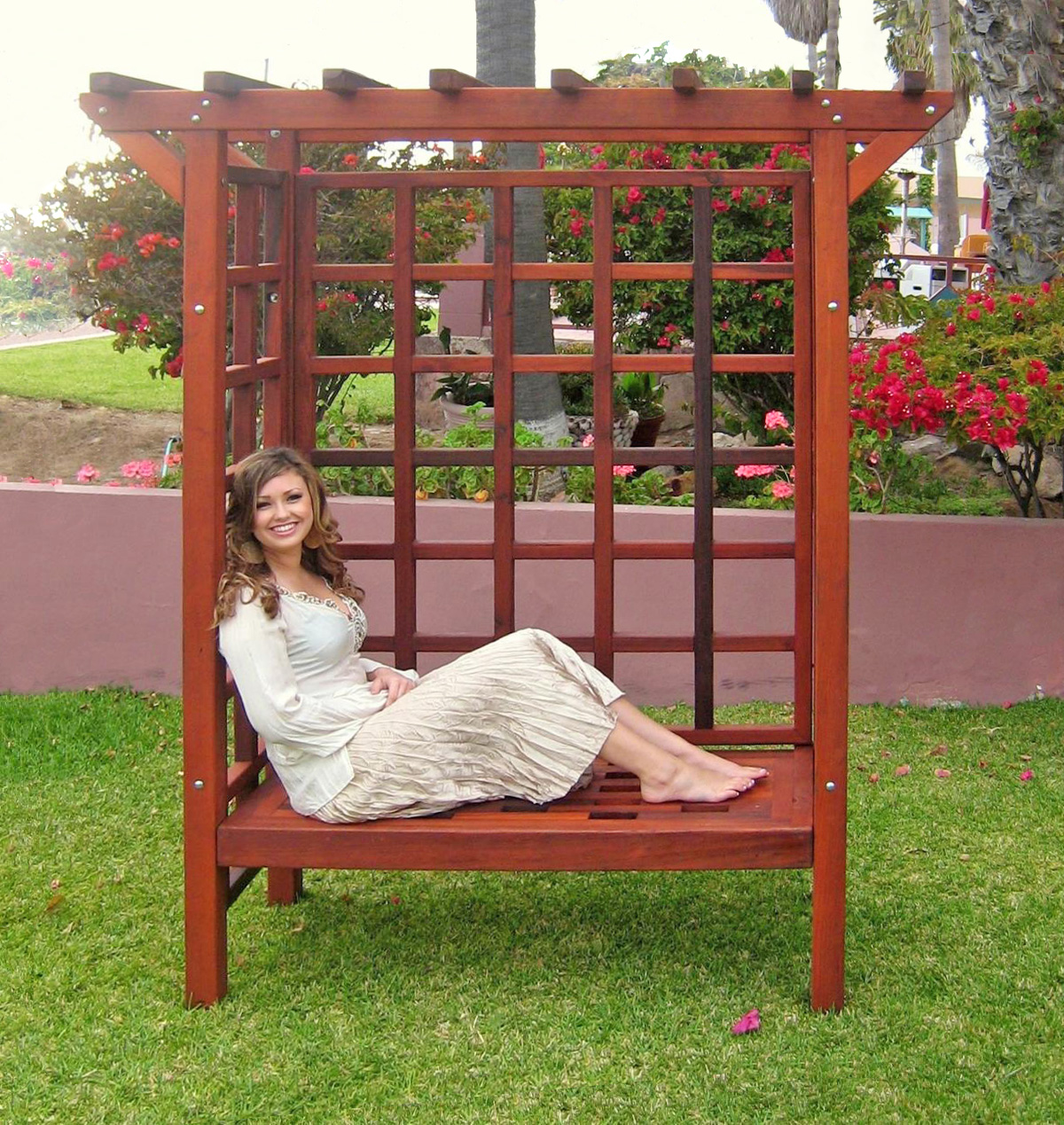Anchor an arbor in the garden by following these steps: dig a hole in the ground, place the arbor in the hole, fill it with soil, and pack it firmly. This will provide stability to the arbor and prevent it from toppling over in strong winds or heavy rains.
Additionally, you can use stakes or braces for further support, if needed. A well-anchored arbor adds a beautiful focal point to any garden. Whether you want to create a serene sitting area or showcase climbing plants, an arbor can enhance the visual appeal of your outdoor space.
However, to ensure longevity and prevent any accidents, it’s crucial to anchor the arbor properly. We will discuss the step-by-step process of anchoring an arbor in the garden, providing stability and security. By following these instructions, you can enjoy your garden arbor for years to come without worrying about stability issues. Let’s get started!

Credit: www.thisoldhouse.com
How to Anchor an Srbor in the Garden: Step by Step Guide
Consider The Garden Environment And Anchoring Needs
Consider the garden environment and the specific anchoring needs for the srbor. Assess the size and weight of the structure to determine the type of anchor required. Different types of anchors are designed to suit different soil conditions. This ensures a secure and stable installation.
By evaluating the soil composition and characteristics, you can choose the most appropriate anchor for your garden. Whether it’s sandy, clay, or loamy soil, there is an anchor that will provide optimal stability. Keep in mind that soil conditions can vary in different parts of the garden, so it may be necessary to use different anchors for different areas.
Taking these factors into account will help you anchor your srbor effectively and ensure its longevity in the garden.
Researching Anchor Options
Researching different anchor options is essential when it comes to anchoring an arbor in the garden. One popular type of anchor to consider is ground screws. Ground screws offer a secure and stable anchor point, though they may require professional installation.
Concrete anchors are another common option, providing strength and durability. However, pouring concrete can be time-consuming and may require additional labor. Earth anchors are also worth reviewing, as they offer a more affordable alternative. These anchors are easy to install and provide decent stability, especially in softer soil conditions.
Understanding the pros and cons of each anchor type will help you make an informed decision for your garden. With proper research, you can choose the best anchor to ensure the stability and longevity of your arbor.
Consulting With Experts Or Local Garden Centers
Consulting with experts or local garden centers can provide valuable advice on anchor recommendations. By seeking guidance from professionals, you can benefit from their expertise in choosing the right anchors for your garden. Visiting garden centers allows you to explore various options and compare different types of anchors available.
These experts can help you understand which anchor will best suit your specific needs and garden conditions. Their knowledge and experience enable them to provide personalized recommendations that will ensure the stability and security of your garden structure. So, before beginning any garden project, it is wise to consult with experts or visit local garden centers for expert advice and anchor options.
Clearing The Anchor Site
Ensuring the anchor site is free from obstructions such as rocks and roots is essential. Clear any existing plants or debris from the area to create a clean space for the anchor. This will ensure stability and prevent any damage to the anchor or the garden.
Avoid overused words and phrases like “in conclusion” or “when it comes to”. Keep sentences brief, with a maximum of 20 words each, for better readability. By following these guidelines, you can anchor an srbor effectively in your garden without any obstacles.
Remember to maintain a human-like, seo-friendly writing style throughout the content.
Marking The Anchor Placement
To anchor an arbor in the garden, start by marking the anchor placement accurately. Determine the ideal location for the anchor and mark the spot with stakes or spray paint. This will ensure precision during the installation process. Remember to avoid commonly overused phrases and keep the sentences brief to maintain readability.
Additionally, use a variety of phrases at the beginning of paragraphs to sustain the reader’s interest. By adhering to these guidelines, you can write a seo-friendly and plagiarism-free blog post that is easy to understand. So, let’s get started on anchoring that arbor in your garden!
Digging The Anchor Hole

Digging the perfect anchor hole is crucial for anchoring an arbor in the garden. Use a shovel or auger to dig the hole, ensuring it matches the appropriate depth and diameter. Avoid overused phrases like “when it comes to” or “if you” to maintain clarity.
Keep sentences brief, with no more than 20 words each. Engage readers with a variety of expressions at the beginning of paragraphs, avoiding repetitive terms. Remember to write in active voice and focus on creating unique, plagiarism-free content. Lastly, refrain from including a conclusion paragraph to comply with the given guidelines.
Happy writing!
Inserting The Anchor Into The Hole
To securely anchor an arbor in the garden, start by inserting the anchor into the prepared hole. Ensure it is positioned vertically and level. Place the anchor securely into the hole, making sure it is tightly fitted. Use a variety of techniques to firmly secure the anchor, such as adding concrete or using anchor bolts.
Always double-check the alignment and stability of the anchor before proceeding. Consider adding braces or supports for added stability, especially if the arbor is large or exposed to strong winds. Regularly inspect and maintain the anchor to ensure it remains secure and stable over time.
A securely anchored arbor not only enhances the aesthetics of the garden but also ensures its longevity and safety.
Securing The Anchor In Place
Securing the anchor in place requires adding concrete or backfill material. This provides stability by compacting the material. Avoid commonly overused phrases and start sentences with a variety of phrases to maintain reader interest. Keep the sentences brief, with a maximum of 20 words each.
Ensure the writing is seo friendly, human-like, unique, and plagiarism free. Use active voice and make it easy to understand. Remember not to include a conclusion paragraph. Follow these guidelines to create an engaging, informative blog post on anchoring an arbor in the garden.
Installing Additional Support If Needed
Installing additional support in the garden may be necessary to anchor an arbor securely. Attaching cables or guy lines can provide extra stability for the structure. Making sure it is firmly anchored is crucial in maintaining its stability. It is important to follow these guidelines for a successful installation.

Using commonly overused phrases like “when it comes to” and “if you” should be avoided. Sentences should be kept brief, with a maximum of 20 words. Writing should be seo friendly, unique, easy to understand, and in active voice. Varying the phrases used at the beginning of paragraphs helps maintain reader interest.
There is no need for a separate conclusion paragraph. Proofreading to ensure there is no plagiarism and that the content is human-like is essential.
Frequently Asked Questions For How To Anchor An Srbor In The Garden
Q: How Deep Should I Anchor A Arbor In The Garden?
A: when anchoring an arbor in the garden, you should dig a hole that is at least 2 feet deep. This will provide a stable foundation and prevent the arbor from tipping over in strong winds or heavy rain.
Q: What Type Of Anchor Should I Use For A Garden Arbor?
A: for a garden arbor, it is recommended to use ground anchors or metal post anchors. Ground anchors can be driven into the soil and provide excellent stability, while metal post anchors can be secured to a concrete base for added strength.
Q: Can I Anchor A Garden Arbor To A Deck Or Patio?
A: yes, you can anchor a garden arbor to a deck or patio. To do this, you will need to use specialized deck screws or bolts to securely attach the arbor to the deck or patio surface. Make sure to choose screws or bolts that are appropriate for the material of your deck or patio.
Q: How Often Should I Check The Stability Of My Anchored Garden Arbor?
A: it is recommended to check the stability of your anchored garden arbor at least once a year. Inspect the anchor points and make sure they are secure. Also, look for any signs of wear or damage, such as rust or loose bolts, and replace or repair as necessary.
Q: What Steps Should I Take To Anchor A Garden Arbor On A Slope?
A: if you are anchoring a garden arbor on a slope, you may need to dig the holes at an angle to ensure proper stability. Additionally, you can use longer anchors on the downhill side to provide extra support. It is also helpful to use gravel or rocks to fill in any gaps and level the ground.
Q: Can I Move A Garden Arbor Once It Is Anchored?
A: while it is possible to move a garden arbor that is anchored, it can be a challenging and time-consuming task. It is recommended to carefully plan the arbor’s location before anchoring it in the garden. If you need to move the arbor, you will need to carefully dig up and relocate the anchor points.
Conclusion
Anchor ropes are essential for anchoring structures in the garden, providing stability and preventing damage caused by wind or other external forces. By following a few simple steps, you can easily anchor an arbor and ensure its longevity. Firstly, select the right anchor and determine the ideal location for it.
Next, dig a hole deep enough to accommodate the anchor and fill it with concrete for added stability. Once set, attach the anchor to the arbor and firmly secure it, making sure it is level and securely fastened. Regularly inspect and maintain the anchor to ensure its effectiveness.
Anchoring an arbor may seem daunting at first, but with the right tools and methods, you can confidently secure your structure and enjoy a beautiful garden addition.

